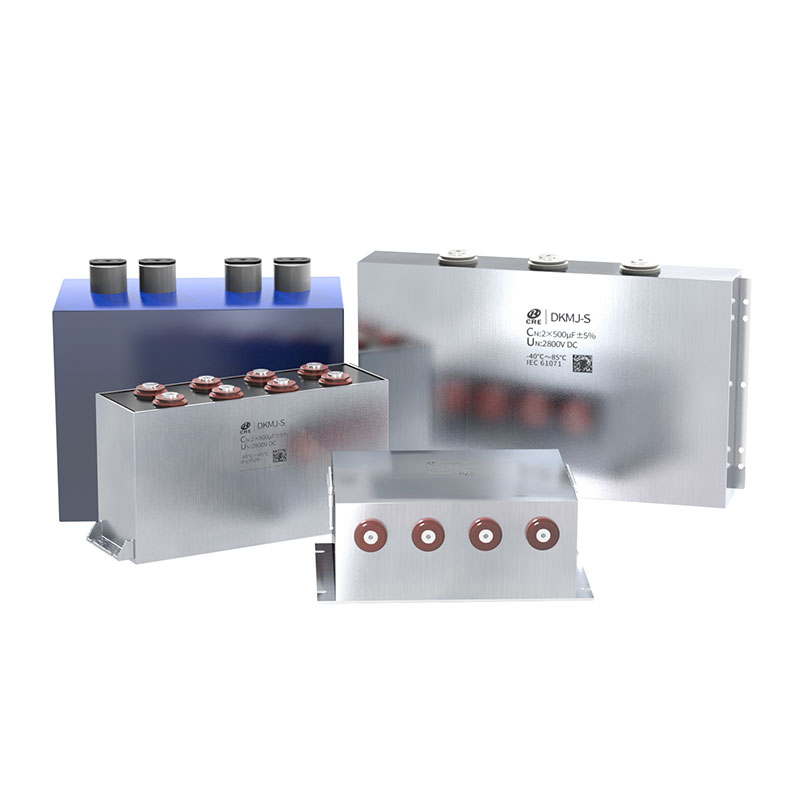- All
- Product Name
- Product Keyword
- Product Model
- Product Summary
- Product Description
- Multi Field Search
Views: 0 Author: Site Editor Publish Time: 2025-09-19 Origin: Site











In the realm of power electronics, dc link capacitors play a pivotal role in ensuring the stability and efficiency of power conversion systems. These capacitors are integral components in applications ranging from renewable energy systems to electric vehicles, where they serve to smooth out voltage fluctuations and store energy temporarily. This article delves into the intricate workings of DC link capacitors, exploring their design, applications, and the technological advancements that continue to enhance their performance.
DC link capacitors are used in power electronics to connect different stages of a power conversion system. They act as a buffer between the input and output stages, storing energy and providing it when needed to maintain a stable voltage level. This stability is crucial for the proper functioning of power electronic devices, which are sensitive to voltage fluctuations. The basic function of a DC link capacitor is to decouple the input and output stages, ensuring that transient voltage spikes do not affect the overall system performance.
The design of DC link capacitors involves considerations of capacitance, voltage rating, and equivalent series resistance (ESR). These parameters determine the capacitor's ability to handle ripple currents and its overall efficiency. Typically, DC link capacitors are made from film materials, which offer low ESR and high ripple current capabilities. The choice of material and design significantly impacts the capacitor's performance in various applications.

DC link capacitors are ubiquitous in modern power electronics, finding applications in renewable energy systems, electric vehicles, and industrial motor drives. In renewable energy systems, such as solar inverters and wind turbines, these capacitors help in smoothing out the power output, which is inherently variable due to changing environmental conditions. By stabilizing the voltage, DC link capacitors ensure that the power generated is suitable for grid integration or direct use.
In electric vehicles, DC link capacitors are critical components in the powertrain, where they manage the energy flow between the battery and the motor. They help in reducing the voltage ripple, which can lead to losses and inefficiencies in the system. Furthermore, these capacitors are designed to withstand the harsh conditions of automotive environments, including temperature fluctuations and vibrations.
Industrial motor drives also benefit from the use of DC link capacitors. These capacitors help in maintaining a stable DC bus voltage, which is essential for the efficient operation of variable frequency drives (VFDs). By minimizing voltage fluctuations, DC link capacitors enhance the performance and longevity of motor drive systems.
The development of DC link capacitors has seen significant advancements over the years, driven by the demand for higher efficiency and reliability in power electronics. One of the key areas of innovation is the use of advanced materials, such as metallized polypropylene films, which offer superior electrical properties and thermal stability. These materials allow for the production of capacitors with higher capacitance and lower ESR, enhancing their performance in high-power applications.
Another area of advancement is the miniaturization of DC link capacitors. As electronic devices become more compact, there is a need for smaller capacitors that can deliver the same or improved performance. This has led to the development of capacitors with higher energy density, allowing for more compact designs without compromising on efficiency.
The integration of smart technologies into DC link capacitors is also gaining traction. These smart capacitors can monitor their own performance and provide feedback to the system, enabling predictive maintenance and reducing downtime. This capability is particularly valuable in critical applications where reliability is paramount.
Despite the advancements, designing DC link capacitors comes with its own set of challenges. One of the primary considerations is the thermal management of the capacitor. As capacitors handle high ripple currents, they can generate significant heat, which needs to be dissipated effectively to prevent damage and ensure longevity. This requires careful design of the capacitor's housing and the use of materials with good thermal conductivity.
Another challenge is the balancing of capacitance and ESR. While high capacitance is desirable for energy storage, it often comes with increased ESR, which can lead to higher losses. Designers must find the optimal balance to achieve the desired performance without compromising on efficiency.
Additionally, the reliability of DC link capacitors is a critical factor, especially in applications where failure can lead to significant downtime or damage. This necessitates rigorous testing and quality control during the manufacturing process to ensure that the capacitors meet the required standards and specifications.
DC link capacitors are indispensable components in the field of power electronics, providing stability and efficiency in a wide range of applications. The ongoing advancements in materials and design are enhancing their performance, making them more reliable and efficient. As the demand for renewable energy and electric vehicles continues to grow, the role of DC link capacitors will become even more critical.